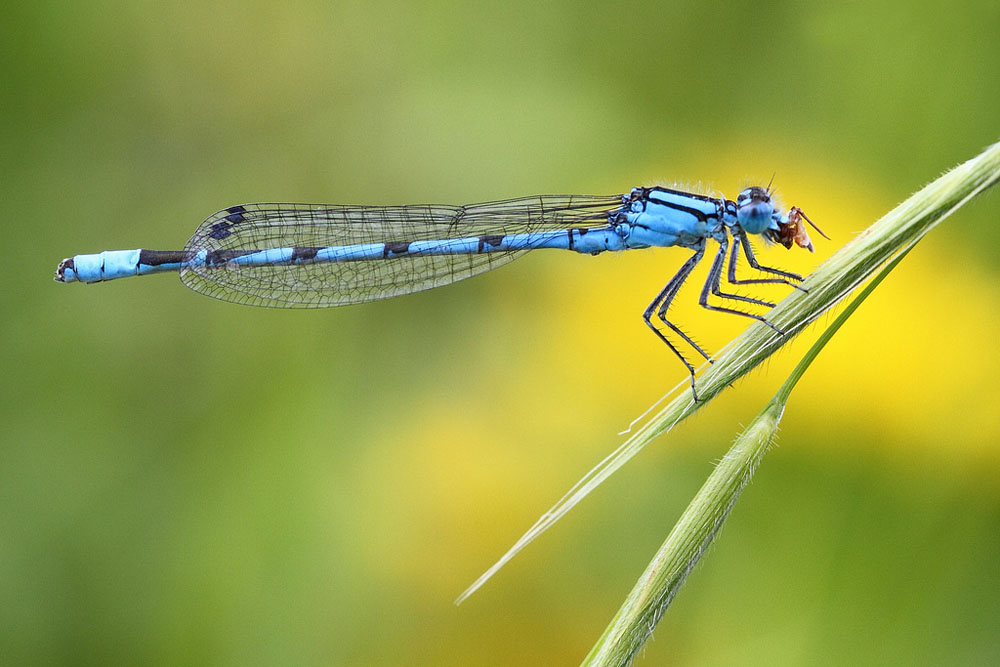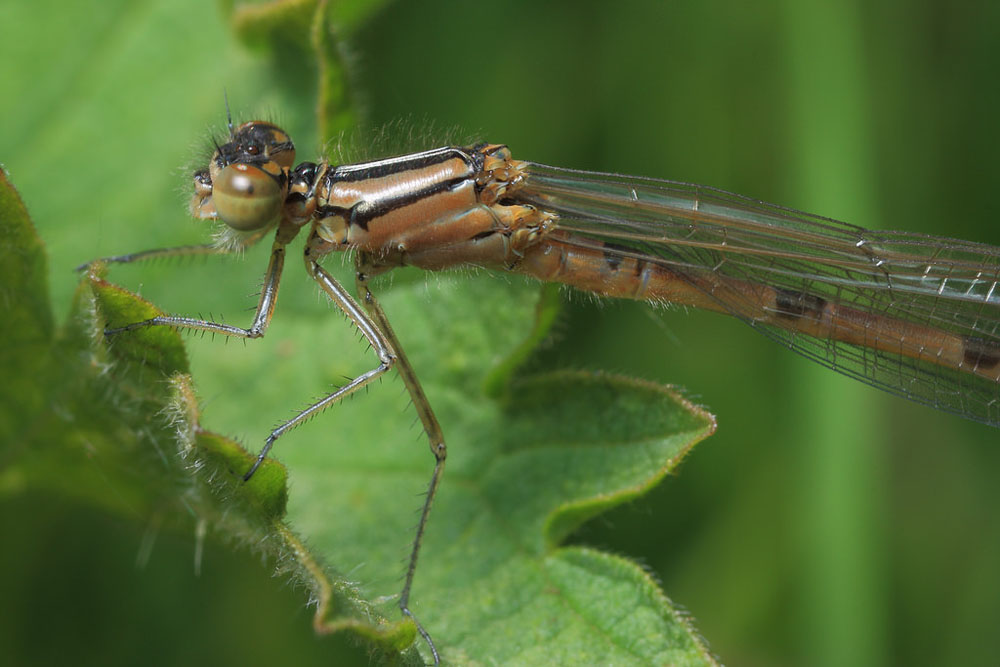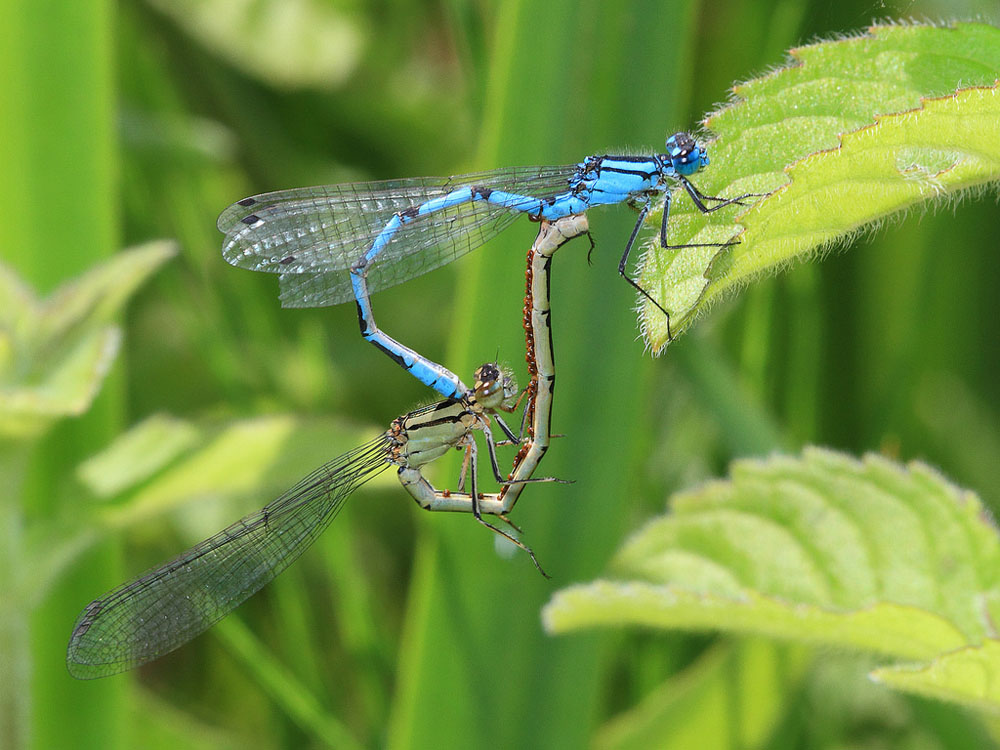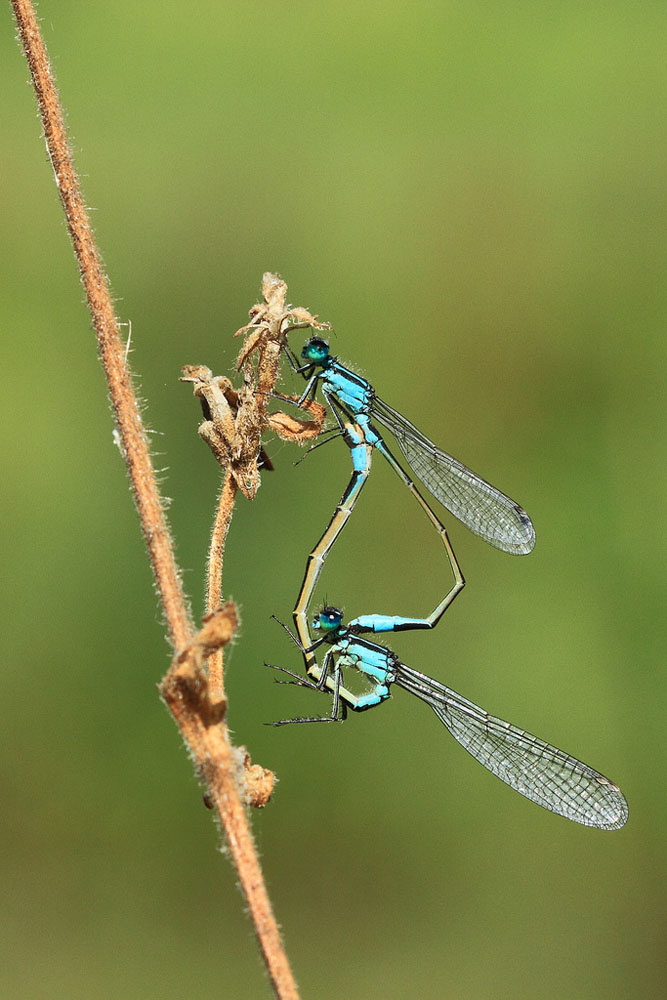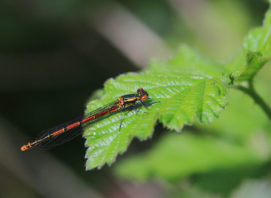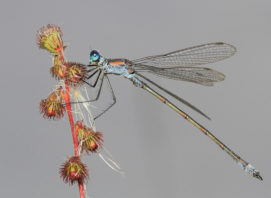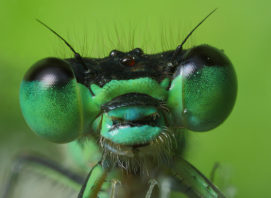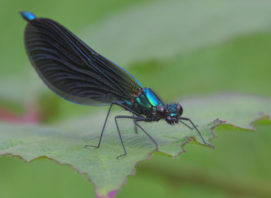Common Blue Damselfly
The common blue damselfly lives up to its name in colour. Our most common damselfly, it is found around almost any waterbody and can also be found away from breeding sites in grassland and woodland. It is s a regular visitor to gardens and is on the wing from the end of May through to September. The common blue damselfly is an aggressive species: males will defend their females as they lay their eggs, both from their own kind and other species. As with other damselflies, when common blues mate they form a ‘mating wheel’ in which the male clasps the female by the neck and she bends her body around to his reproductive organs.
The male common blue damselfly is pale blue with bands of black along the body; the female is either blue or dull green with distinctive black ‘torpedo’ markings. To identify the small blue damselflies, of which there are seven species in the UK, you should concentrate on the pattern on the second segment of the males’ abdomen, just behind the thorax. In the common blue damselfly, this segment is blue with a black button mushroom-shaped mark.

